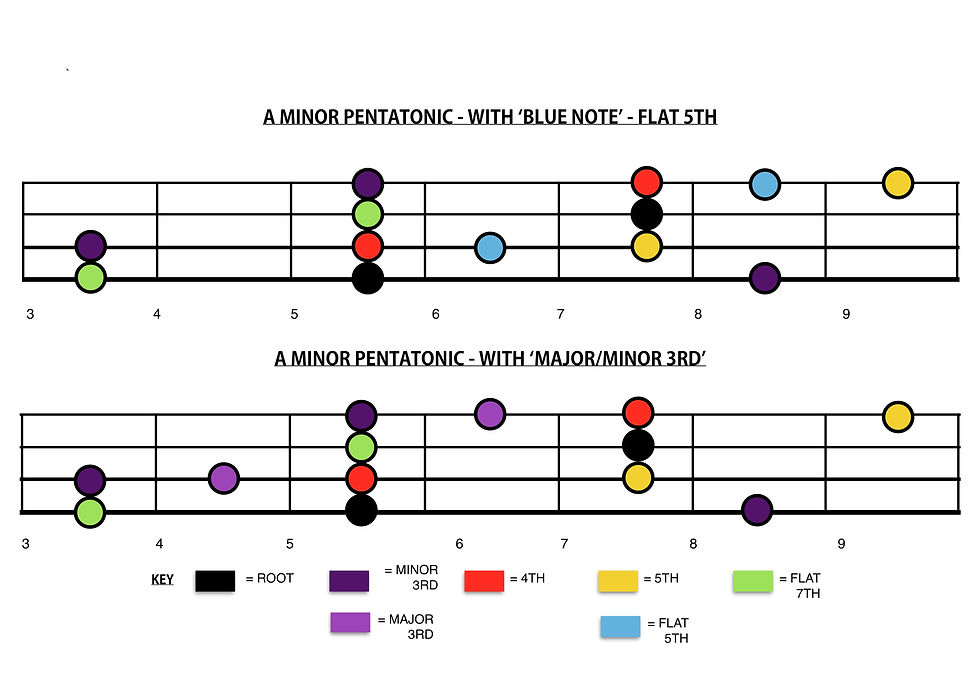Improve Your Pentatonic Playing With Just 3 Notes! Pt.2
- Craig Strain
- Feb 18, 2019
- 2 min read
Last blog post we looked at playing the minor pentatonic scale in a couple of different fingerings and also spreading it out over the neck to help us escape the ‘box syndrome’ a lot of players find themselves in. In this second instalment we’re going to look at adding 2 notes from outside the scale to give a little more colour and flavour to our licks and fills.
The first note we are going to add is the flattened 5th, otherwise known as the ‘blue note’ and in the case of our A minor pentatonic scale it’s going to be an Eb. So our new scale looks like this: A C D Eb E G As you play this new version of the scale pay close attention to how that Eb sounds in context, both ascending and descending. It gets the ‘blue note’ name from it’s prevalence in blues music, indeed the minor pentatonic with this note is often referred to as the Blues Scale. Context is something we are going to talk about a little more in these lessons as it’s important to know how best to use these ‘outside’ notes. The next note we can add is the major 3rd, or C# in this case. This scale looks like this: A C C# D E G As you play this scale up and down, you may notice that it doesn’t sound quite as ‘good’ as the b5 and so you may be asking “How we can be adding a major 3rd into what is essentially a minor sounding scale?” Well, here is where we need to talk about context. One of the issues with learning scales is a lot of people struggle with the musical application and get disheartened with ‘music theory’. The fact is, playing a scale doesn’t equal playing music, it’s up to the musician to develop their own vocabulary from those scales via jamming, transcription and critical listening.
To start you off I’m going to give you 3 licks that use these new notes and I want you to pay close attention to the context of the b5 and major 3rd in each. In the first lick the b5 is resolved to the natural 5, Eb - E In the second lick the minor 3rd moves to major 3rd, C - C# then resolves to the root. In the 3rd lick the b5 resolves both up to the natural 5th and down to the natural 4th, and we have the same tension and resolution of the minor/major 3rd to the root.
Hopefully this will give you a good starting point to come up with your own vocabulary and begin to expand your pentatonic playing! See you next time! Craig




























Comments